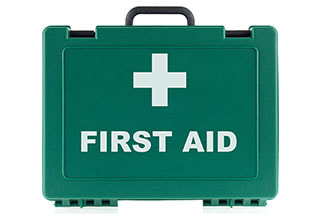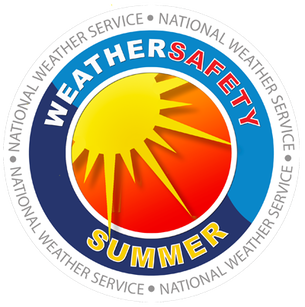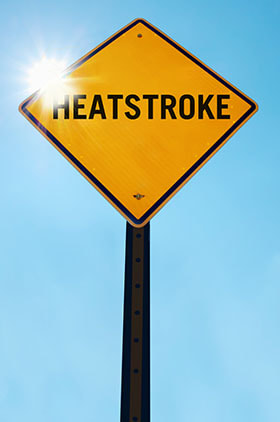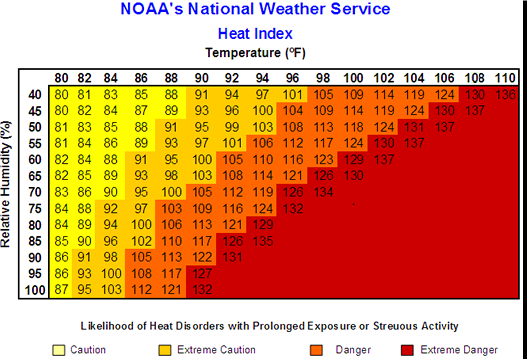|
It is that time of year. The “Dog Days of Summer.” In many areas of the Midwest it is expected to be hot and humid. Workers young and old are being exposed to heat and humidity but may not yet be acclimated. Let’s review some important principles of heat exposure and the signs and symptoms of heat exhaustion and heat stroke. Signs, Symptoms & First Aid The first thing to know is how to recognize the signs and symptoms of heat cramps, heat exhaustion and heat stroke.
Heat Stress Regulations & Guidance There are no specific regulations for heat stress, but MIOSHA, OSHA, ACGIH, NIOSH and NOAA all have guidance and information to educate employers on how to keep workers safe from heat induced illnesses. A good place to start is the Heat Index published by NOAA. Heat Index: The heat index is the “feels like” temperature we hear from the local weather station and it incorporates both temperature and humidity. The higher the heat index the hotter it will feel and the greater the risk of workers experiencing heat-related illness. The index is broken into four levels of risk: Caution; Extreme Caution; Danger and Extreme Danger. Humidity Matters
Relative humidity is the amount of moisture in the air. The higher the humidity the harder it is for the body to cool itself through evaporation of sweat resulting in the air temperature feeling hotter. Contrary to that, very low humidity can also cause problems if our sweat evaporates too quickly causing dehydration if a person does not drink enough water. An important side-note about the NOAA heat index is that the values were developed for shady, light wind conditions. This is a critical consideration because exposure to full sun can increase heat index values by up to 15 degrees F. As a result, solar load needs to be considered when developing protective measures for a particular job or work site. ACGIH Threshold Limit Value In the back of the ACGIH TLV and BEI booklet is a Thermal Stress section that includes heat stress and strain guidelines. The section includes a decision tree, the use of Wet-Bulb Globe Temperature, clothing adjustments and other criteria to provide a TLV and action level for planning purposes to avoid heat strain. The section also includes warnings about the TLV being based on the ability of most healthy people who are also acclimatized. The TLV does not apply to people with prior heat stroke, heat exhaustion, cardiac or kidney problems, pregnancy, obesity or older workers, among others. Heat-Related Illness Prevention Plan Whether you are looking at ACGIH, OSHA or other heat stress guidance, having a plan for a particular job or job site that will be proactive in protecting workers is a plus. Depending on the environmental conditions, acclimation of workers and their overall health, some plan elements are as follows:
The following links have some helpful information for developing and implementing a Heat-Related Illness Prevention Plan, including an OSHA-NIOSH Heat Safety app downloadable to a cell phone:
1 Comment
|
|





 RSS Feed
RSS Feed
